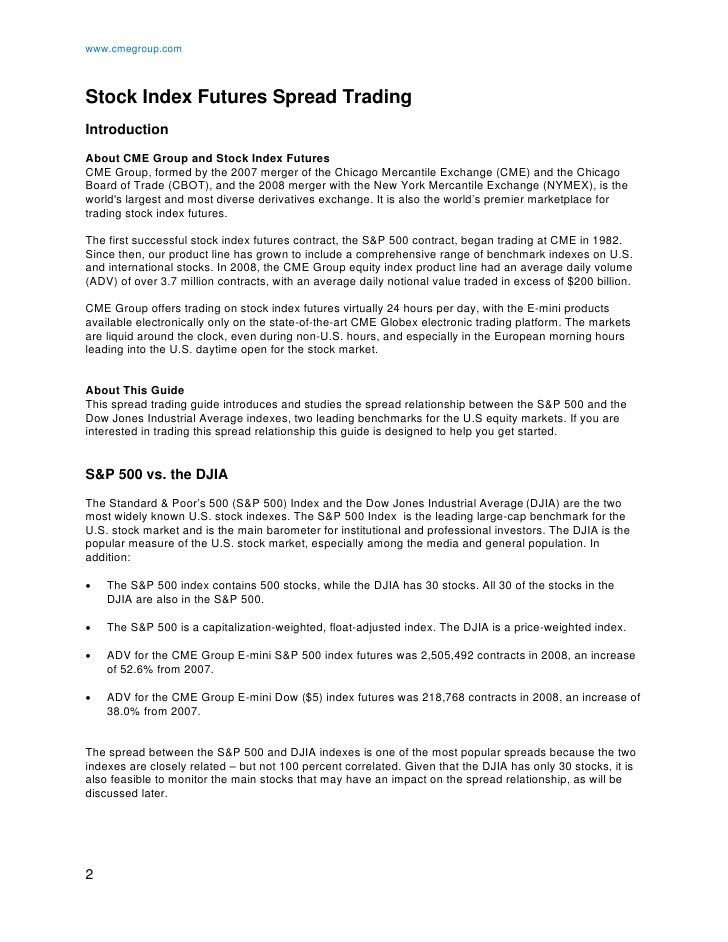Spread Trading Opportunities for Stocks Futures and Options
Post on: 26 Июнь, 2015 No Comment

There are those who say that spread trading is the best use of your trading capital and that this is a great way to trade the futures market. I am not sure that is accurate; let’s see what we can find out.
- What is a Spread?
Spread trading is a little more complicated than what you may be used to. It’s basically when equal numbers of a security are bought and sold at the same time, but each one has different prices and sometimes different expirations.
Let’s be more clear, a spread trade is the simultaneous buying of a security and the selling of another. The spread is the difference between the two prices. These securities are called “legs” and are a crucial part of spread trading.
There Are Several Ways To Gain From Spread Trading
You can spread trade options or futures contracts, and sometimes even other securities, but let’s keep this as simple as we can. The goal is to receive in payment more than you paid to purchase. That difference is the spread.
- How Do You Set Up the Trade?
You want the spread trade to be treated as one unit, even though it represents two trades. There are ways to place the spread trade into your spread trading platform that will ensure this. If the two parts of the trade don’t get treated as one, you run the risk of one side filling and the other not. Then your plans are ruined.
It is the width of the spread between the two securities that creates your profits while spread trading, not the price of the security itself.
Now, when you spread trade you won’t experience much volatility. When wild fluctuations race through the market, the spread trading movement is felt on both sides of your spread; therefore, the spread difference will most likely remain the same.
Different Types of Spread Trades
- Small Spread
When the bid (buying) and the ask (selling) prices are close to each other, a small spread is created. This is what you see happening during active spread trading with high volume (the number of contracts being traded).
- Large Spread
When the bid (buying) and the ask (selling) prices are far apart, a large spread trading opportunity is created. This is what you see happening during low market activity with low volume (the number of contracts being traded).
Spread Trading Futures & Options
Quite often day traders prefer small spreads because their orders are most likely to be filled at the desired price.
- Calendar Spreads
Calendar spreads have legs that have different delivery dates, but they represent the same position on the different calendars. This type of spread trading is used to roll over into a new expiration period.
Upon expiration of a futures contract, the seller is obligated to physically deliver the specified quantity of the underlying commodity. This is rarely done in spread trading though. Instead it’s more convenient for both parties to settle the trade financially. Commonly this is accomplished by entering into an offsetting position in the market. For example, if you have sold a futures contract you could effectively cancel the position by purchasing an identical futures contract, and vice versa.
If a trader wants to continue holding a position beyond the contract expiration, the contract can be rolled over by using a spread trade. One trade disappears while the other remains to expire in the future.
- Intercommodity Spreads
Intercommodity spreads are created by two related, but different commodities. It reflects the economic relationship between them and is used often in spread trading.
- Crack Spreads
The crack spread between gasoline and crude oil represents the premium charged to make gasoline by refining crude.
- Spark Spreads
There is a spark spread for gas-fired power stations. It is between natural gas and electricity.
- Option Spreads
Option spreads are made using the same underlying commodity or stock, but with different option contracts while spread trading.
Popular Securities to Trade Spreads
- Currency Futures: EUR – the euro futures
- Stock Index Futures: YM – the Dow Jones futures; ES – the S&P 500 futures; TF – the Russell 2000 futures; DAX – the DAX futures; CAC40 – the CAC40 futures
- Commodity Futures: ZG – the gold 100 troy ounce futures
- Agricultural Futures: ZC – corn futures; ZW – wheat futures
Margin
Margin requirements to spread trade futures are relatively low, and spreads on futures are normally even lower than option trading which makes spread trading popular. You can actually trade on a ratio of 1:10.
If you’re looking for an easy trading style, with low margin requirements and makes up to ten times more margin return than the stock market, then I believe spread trading may suit you.














